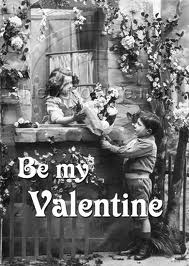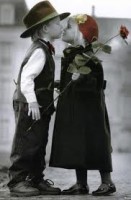Happy Saint Valentine’s Day The Legend

The history of Valentine’s Day–and the story of its patron saint — is shrouded in mysteries. We do know that February has long been celebrated as a month of romance. Because of the religious beliefs that St. Valentine’s Day contains vestiges of both Christian and ancient Roman tradition. But who was Saint Valentine, and how did he become associated with this ancient ritual?
One legend contends that Valentine was a priest who served during the third century in Rome. When Emperor Claudius II decided that single men made better soldiers than those with wives and families, he outlawed marriage for young men. Valentine, realizing the injustice of the decree, defied Claudius and continued to do marriages for young lovers in secret.
St. Valentine action is death sentence
When Valentine’s actions were discovered, Claudius ordered that he be put to death. Other stories suggest that the killing of Valentine was for him attempting to help Christians escape harsh Roman prisons, where they were often beaten and tortured.
According to one legend, an imprisoned Valentine actually sent the first “valentine” greeting himself after he fell in love with a girl–possibly his jailer’s daughter–who visited him during his confinement. Before Valentine died it is though he wrote the girl a letter signed “From your Valentine”, an expression that is still used today. Although the truth behind the Valentine legends is murky, the stories all emphasize his appeal as a sympathetic, heroic and–most importantly–romantic figure. By the Middle Ages, perhaps thanks to this reputation, Valentine would become one of the most popular saints in England and France.
Origins of Valentine’s Day: A Pagan Festival in February

Some believed Valentine’s Day, celebrated in the middle of February, commemorate the anniversary of Valentine’s death or burial, which probably occurred around A.D. 270. Others claim the Christian church may have decided to place St. Valentine’s feast day in the middle of February to Christianize the pagan celebration of Lupercalia.
Celebrated on the ides of February, (February 15), Lupercalia a fertility festival dedicated to Faunus, the Roman god of agriculture, as well as to the Roman founders Romulus and Remus. To start the festival, Roman Priests of the Luperci, would gather at a sacred cave. The sacred cave believed to be where the founders of Rome, infants Romulus and Remus, were cared for by a she wolf or lupa. Hey folks you can’t make this stuff up! ha
Sacrifice a goat…
The priests would sacrifice a goat, for fertility, and a dog, for purification. Priests would cut the goat’s hide into strips, dip them into the sacrificial blood and take to the streets. Once in the street Priests would gently slap both women and crop fields with the goat hide. Not being feared, Roman women welcomed the Priest’s slap of their hides every year. They believed the slaps made them more fertile to bear children in the coming year.
Later in the day all the young women in the city would place their names in a big urn. The city’s bachelors would each choose a name from the urn, and became paired for the year with his selected woman. These matches often ended up becoming marriages.Valentine’s Day: A Day of Romance
Lupercalia survived the first rise of Valentine’s Day however, deemed “un-Christian” until at the end of the 5th century, Pope Gelasius declared February 14 St. Valentine’s Day. It was not until later, however, that the day became definitively associated with love.
During the Middle Ages in France and England believed February 14 started the mating season for birds. This belief re-enforced the idea the middle of Valentine’s Day should be a day for romance. Valentine greetings were popular as far back as the Middle Ages, though written Valentine’s didn’t begin to appear until after 1400.
The oldest known valentine in existence is a poem written in 1415 by Charles, Duke of Orléans. Duke sent the poem to his wife during his imprisonment in the Tower of London. Duke incarceration resulted from his capture at the Battle of Agincourt. (The greeting is now part of the manuscript collection of the British Library in London, England.)
Typical Valentine’s Day Greetings

In addition to the United States, Valentine’s Day is celebrated in Canada, Mexico, the United Kingdom, France and Australia around the 17th century. By the middle of the 18th, it was common for friends and lovers of all social classes to exchange small tokens of affection or handwritten notes. By 1900 printed cards began to replace written letters due to improvements in printing technology.
Cheaper postage rates also contributed to an increase in the popularity of sending Valentine’s Day greetings. Americans probably began exchanging hand-made valentines in the early 1700s. In the 1840s,
Esther A. Howland began selling the first mass-produced valentines in America. The Mother of the Valentine made elaborate creations using real lace, ribbons and colorful pictures known as scrap. This an annual 1 billion cards sent according to the Greeting Card Association. Because of this large number it makes Valentine’s Day the second largest card-sending holiday of the year. In first place, with 2.6 billion cards is Christmas. Women purchase about 85 percent of all valentines cards.
Happy Saint Valentine’s Day Kissing your Valentine

Valentine greetings were popular as far back as the Middle Ages. Written Valentine’s didn’t begin to appear until after 1400. Again, the oldest known valentine in existence is a poem written in 1415 by Charles, Duke of Orléans. (The greeting is now part of the manuscript collection of the British Library in London, England). Several years later, it is believed that King Henry V hired a writer John Lydgate to compose a valentine for Catherine of Valois.
In addition to the United States, Valentine’s Day is celebrated in Canada, Mexico, the United Kingdom, France and Australia. By the middle of the 18th, it was common for friends and lovers of all social classes to exchange small tokens of affection or handwritten notes. By 1900 printed cards began to replace written letters due to improvements in printing technology. Ready-made cards were an easy way for people to express their emotions. Cheaper postage rates also contributed to an increase in the popularity of sending Valentine’s Day greetings.
Happy Saint Valentines Day In your sights Eros

Americans probably began exchanging hand-made valentines in the early 1700’s. In the 1840’s, Esther A. Howland began selling the first mass-produced valentines in America. Howland, known as the “Mother of the Valentine,” made elaborate creations. Made with real lace, ribbons and colorful pictures known as “scrap”. This makes Valentine’s Day the second largest card-sending holiday of the year. (An estimated 2.6 billion cards are sent for Christmas.) Women purchase about 85 percent of all valentines. *Source for this information is: http://www.history.com/topics/valentines-day
#saintvalentinesday #stvalentinesday #feburary14 #love


